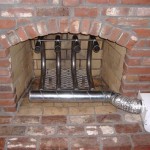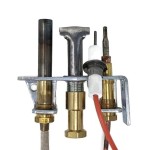How to Resurface a Fireplace
A fireplace serves as a focal point in many homes, providing warmth and ambiance. However, over time, the fireplace surface can become worn, stained, or simply outdated. Resurfacing a fireplace is a viable option for updating its appearance without the expense and disruption of a complete replacement. This article provides a comprehensive guide on how to resurface a fireplace, covering preparation, material selection, and the resurfacing process itself.
Assessing the Existing Fireplace
Before beginning any resurfacing project, a thorough assessment of the existing fireplace is crucial. This assessment involves identifying the current fireplace material, evaluating its condition, and determining the desired aesthetic outcome. Common fireplace materials include brick, stone, tile, and concrete. Each material has unique characteristics and requires specific resurfacing techniques and compatible materials.
The condition of the existing fireplace will dictate the scope of the resurfacing project. Look for cracks, crumbling mortar, loose stones or tiles, and staining. Minor imperfections may only require patching and cleaning. However, significant damage might necessitate more extensive repairs or even removal of sections of the existing material. Addressing structural issues is paramount before applying any new surface.
Consider the desired aesthetic outcome. Do you want a modern, rustic, or traditional look? What colors and textures are preferred? Researching various resurfacing options and gathering inspiration from design magazines or online platforms can help solidify the design vision. This research will also help determine the appropriate resurfacing materials and techniques.
Preparing the Fireplace for Resurfacing
Proper preparation is essential for a successful fireplace resurfacing project. This step involves cleaning the existing surface, making necessary repairs, and applying a bonding agent to ensure proper adhesion of the new material. Failure to adequately prepare the surface can lead to premature failure of the resurfacing material.
Begin by thoroughly cleaning the fireplace surface. Remove any soot, dirt, dust, and debris with a stiff brush, a vacuum cleaner, and a suitable cleaning solution. For brick or stone fireplaces, a wire brush can be used to remove stubborn stains. Rinse the surface thoroughly with clean water and allow it to dry completely. For grease or oil stains, a degreasing cleaner may be required.
Address any necessary repairs before proceeding. Repair cracks in the mortar joints with a masonry repair compound. Use a chisel and hammer to remove loose or damaged bricks, stones, or tiles, and replace them with matching materials. Ensure that the new materials are properly secured with mortar. Allow the mortar to cure fully before continuing with the resurfacing process. For larger cracks or structural damage, consult a qualified professional.
Apply a bonding agent to the fireplace surface to promote adhesion of the new resurfacing material. A bonding agent is a liquid that is applied to the existing surface and creates a textured surface for the new material to grip onto. Follow the manufacturer’s instructions for application. Ensure that the bonding agent is compatible with both the existing fireplace material and the new resurfacing material. Allow the bonding agent to dry completely before proceeding.
Resurfacing Options and Techniques
Several resurfacing options are available for fireplaces, each with its own distinct advantages and disadvantages. The choice of resurfacing material will depend on the desired aesthetic, the existing fireplace material, and the budget.
Concrete Overlay: Applying a concrete overlay involves covering the existing fireplace with a thin layer of concrete. This option is versatile and can be used to create a variety of textures and finishes, from smooth and modern to rustic and textured. Concrete overlays can be tinted to achieve a wide range of colors. The application process typically involves mixing the concrete according to the manufacturer’s instructions and applying it to the fireplace surface with a trowel. Multiple coats may be required to achieve the desired thickness and finish. Stamping or texturing tools can be used to create patterns in the concrete before it dries. Sealing the concrete overlay is essential to protect it from stains and moisture.
Stone Veneer: Stone veneer involves adhering thin slices of natural or manufactured stone to the existing fireplace surface. This option provides the look and feel of real stone at a fraction of the cost. Stone veneer is available in a variety of styles, colors, and textures. The application process involves applying a thin-set mortar to the back of the stone veneer and pressing it firmly onto the fireplace surface. Spacers can be used to maintain consistent spacing between the stones. After the mortar has cured, the joints between the stones are filled with grout. Sealing the stone veneer is recommended to protect it from staining and moisture.
Tile Overlay: Tile overlay involves covering the existing fireplace with new tiles. This option allows for a wide range of design possibilities, as tiles are available in a variety of materials, colors, patterns, and sizes. The application process involves applying a thin-set mortar to the back of the tile and pressing it firmly onto the fireplace surface. Spacers can be used to maintain consistent spacing between the tiles. After the mortar has cured, the joints between the tiles are filled with grout. Sealing the grout is essential to protect it from staining and moisture. Consider using tiles that are specifically designed for fireplace surrounds as they are heat resistant.
Whitewashing or Painting: Whitewashing or painting a brick fireplace is a simple and cost-effective way to update its appearance. Whitewashing involves applying a diluted coat of white paint to the brick, allowing some of the brick’s natural color and texture to show through. Painting involves applying a solid coat of paint to the brick. Before whitewashing or painting, the brick must be thoroughly cleaned and primed. Use a paint that is specifically designed for masonry surfaces. Consider applying a clear sealant to protect the paint from heat and staining.
Applying a Plaster Finish: Plaster finishes can be used to create smooth, textured, or decorative surfaces on a fireplace. The application process involves applying several thin coats of plaster to the fireplace surface, allowing each coat to dry before applying the next. Various techniques can be used to create different textures, such as troweling, sponging, or stippling. The plaster can be tinted to achieve a wide range of colors. Sealing the plaster finish is essential to protect it from staining and moisture.
Safety Considerations
Prior to starting any fireplace resurfacing project, it’s important to disconnect any gas lines or electrical connections. Consult with a qualified technician if you are unsure how to perform this task safely. Ensure adequate ventilation in the work area to avoid inhaling dust or fumes. Wear appropriate personal protective equipment, such as safety glasses, gloves, and a dust mask. Follow all manufacturer’s instructions for the materials being used. When working with power tools, such as grinders or saws, exercise caution and use appropriate safety guards. Clean up the work area thoroughly after completing the project.
When selecting materials for the fireplace resurfacing project, confirm that the selected materials are heat-resistant and suitable for use near a fireplace. Avoid using flammable materials or materials that emit toxic fumes when exposed to heat. When applying mortar or grout, ensure that it is properly mixed and applied according to the manufacturer’s instructions. Allow the mortar or grout to cure fully before using the fireplace. Regularly inspect the fireplace for any signs of damage or deterioration. Address any issues promptly to prevent further damage. Ensure that the fireplace is properly cleaned and maintained to prolong its lifespan.
It is recommended to consult a qualified professional for complex or structural fireplace repairs. Professionals have the expertise and equipment to safely and effectively address any underlying issues. Obtaining necessary permits and adhering to local building codes is essential to ensure that the resurfacing project is compliant with regulations. Ignoring building codes can result in fines or legal issues. If unsure about any aspect of the resurfacing project, seek professional advice. A qualified contractor can provide guidance on material selection, installation techniques, and safety considerations.

Reface A Fireplace With The Look Of Stone Or Brick Barron Designs

10 Fireplace Makeover Ideas Before And After Regency

15 Fabulous Fireplace Refacing Ideas Average But Inspired

10 Fireplace Makeover Ideas Before And After Regency

A Step By Guide To Fireplace Refacing Diy Family Handyman

Diy Fireplace Makeover Wood Slat

How To Reface A Fireplace We Love Fire

Reface Your Fireplace Fresh New Look Hearth Remodeling

Reface A Fireplace With The Look Of Stone Or Brick Barron Designs

Refacing Fireplace And Chimney Authority
Related Posts








